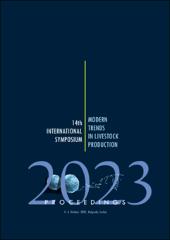Assessment Of The Current State Of Biosecurity Measures On Broiler Chicken Farms With Different Capacities In Vojvodina

View/
Date
2023-10-04Author
Pajić, Marko
Knežević, Slobodan
Maletić, Jelena
Spiridonović, Sava
Đurđević, Biljana
Todorović, Dalibor
Ostojić Andrić, Dušica
Metadata
Show full item recordAbstract
The broiler production faces many challenges, which can cause negative
effects on their health and welfare. The great importance for farmers is to prevent
disease outbreaks, and biosecurity measures are very significant. This study aimed
to quantify the level of biosecurity measures in broiler farms of different capacities,
using a standardized procedure, and to identify key aspects that would require
improvements. The research was conducted from May to September 2022, and 15
randomly selected broiler farms participated. Five large-size (>30,000 chickens),
five middle-size (10,000-30,000 chickens) and five small-size farms (<10,000
chickens) were analyzed. All farms are located in Vojvodina and farmers agreed to
participate in the survey. The Biocheck.UGent scoring system
(https://biocheckgent.com/en) was used to quantify biosecurity measures. The
overall farm biosecurity is a weighted average of the external and internal
biosecurity. Our results showed a low level of implementation of internal and
external biosecurity measures on all farms (40-63%). The overall rating of
biosecurity on farms was lower than the world and country's average. The results of
this study suggest that the control of implemented biosecurity measures in broiler
farms is very important. Most of the biosecurity risks for broiler farms originate
from inappropriate site selection, purchase of day-old chicks of unknown quality,
lack of procedures, and training of farm employees. This study should provide a
good encouragement for the development of a biosecurity plan, identifying risks
and the appropriate way to educate farm owners, as well as farm employees, on the
implementation of biosecurity measures.
